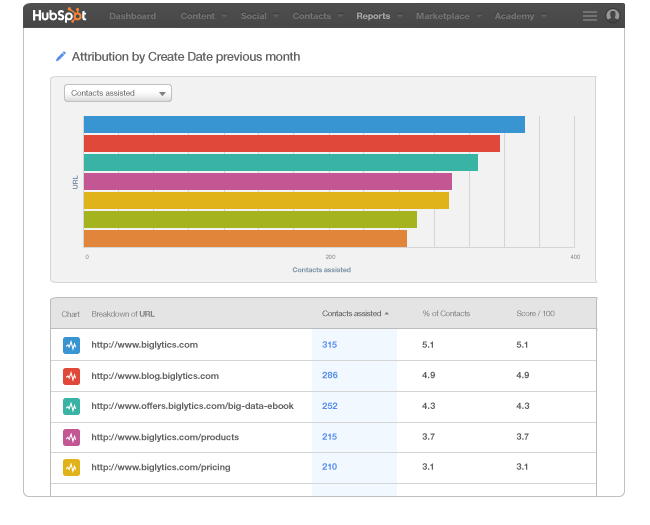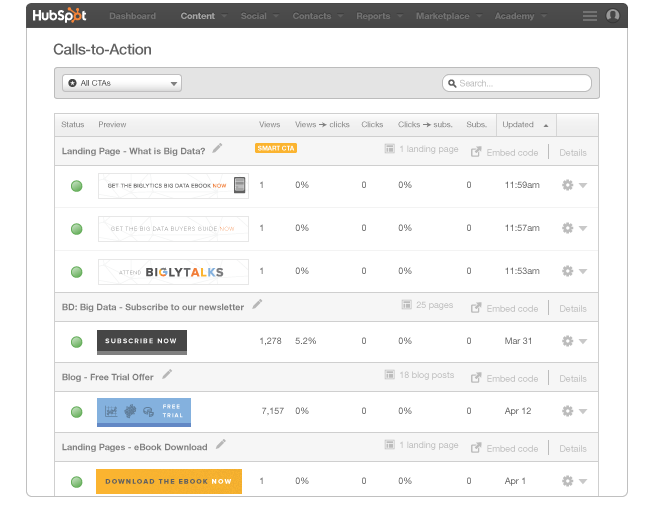Topics:
Marketing StrategyJoin 40,000+ sales and marketing pros who receive our weekly newsletter.
Get the most relevant, actionable digital sales and marketing insights you need to make smarter decisions faster... all in under five minutes.
In the fast-paced world of marketing and minimum viable products, there's a never-ending debate about which matters more: planning or execution?
Smart B2B marketing, however, requires both.
Flawless execution of a bad plan is just as bad as poor execution of a great plan. In fact, it's the execution of planning a marketing strategy that sets dominant brands apart from the rest, but we're getting off topic.
Looking at the Data
The best way to plan is to start by looking at the results of what you've previously executed on.
Your inbound marketing website and database is a hub of detailed information. Since you are creating content and attracting prospects to it, you can track and analyze an array of user behavior data that you can then use to plan your future moves.
You can also use this information to better understand to improve your marketing message.
In this article, we'll share a simple 6-step checklist for smarter B2B marketing planning and execution. Let's start from the top.
1. Review Your Marketing Objectives
Before you go through all of the data, you need to have an idea of what you're looking for. What does your marketing strategy need to accomplish?
In general, it's best to have one primary marketing objective at a time. If your resources are spread too thin you will be likely to only generate mediocre results.
The primary marketing objectives for most companies are usually:
- Brand awareness: The number of people you reach with your message; creating content that gets discovered on search engines and shared on social media.
- Lead generation: Turning blog readers and social media followers into email subscribers and ideally, qualified leads.
- Sales: Optimizing landing pages and email campaigns, while aligning marketing and sales to turn qualified leads into happy customers.
- Customer loyalty: Creating content that provides value for current customers and further improves their relationship with your brand.
For the purpose of this article, let's focus on lead generation.
2. Identify Key Questions You Need Answered
Once you've reviewed your marketing objectives, it's time to identify the key questions that you are going to use your data to answer. Try to think about what information is going to give you the most actionable data.
Here are some questions you could ask in this scenario:
- How much traffic are we getting?
- Where are website visitors coming from?
- What are our conversion rates?
- Which landing pages have the best and worst conversion rates?
- What type of content is getting the most traffic and generating the most leads?
- How is our marketing influencing traffic and conversion rate trends?
- What events have had a major impact on traffic?
- What traffic source generates the most leads and the highest quality leads?
- Which CTA generates the most leads?
Try not to get carried away here. Looking at which day of the week has the lowest bounce rate is a distraction. Focus on the events that are most significant to your marketing objective.
3. Collect Your Data
All you're doing on this step is finding the data that helps you answer your questions. If you're using HubSpot or Google Analytics, this is easy. Both allow you to access all of the marketing data from your website activity that you could need to answer your questions.


Above is a look at traffic sources. This shows you where your traffic is coming from and more importantly, where your leads and customers are coming from.

Pictured above is a breakdown of leads generated by page.

Finally, the last example shows a comparison of CTA performance.
4. Organize Your Data
Once you've found all of the data you need, you'll want to compile everything and organize it in a report or several reports.
If you're a HubSpot customer, you can use the new Reporting add-on to create detailed and attractive reports in seconds. If you're using Google Analytics, you can export your data to Excel to organize everything and create reports.
It's easy to get distracted here by creating a bunch of reports that show your most flattering metrics. However, that's not the purpose of this step. We're only concerned with creating reports that provide the information we need to achieve our marketing objectives.
5. Answer Your Key Questions
Answering many of your questions will be straightforward. For example, identifying your best traffic sources doesn't even require you to generate a report and you likely already know the answer to that question.
However, some questions will be a little more challenging, such as identifying events that had a major impact on traffic or lead generation. You can easily find the dates where there was a spike, but you might not be able to find the event that triggered that spike in your analytics. This might require you to take a look at your calendar to see if any marketing events coincided with those dates -- and you might have to dig through social media activity, emails, or talk it over with your team.
This is why tracking everything you can, consistently, is so valuable.
As you're going through and answering your questions, the two things you want to especially look out for are:
- Major flaws in your marketing system
- Opportunities worth exploiting
These are the two areas that have the most potential for an increase in ROI.
For example, let's say you find out that LinkedIn provides you with the highest percentage of qualified leads, but the lowest total amount of leads because your brand is rarely active there. LinkedIn would look like a weak source of leads if you weren't asking the right questions.
Once you've found the areas where you can potentially have the biggest impact, it's time to move on to the next step.
6. Create an Action Plan
Now you just need to prioritize the steps you will take to accomplish your marketing objectives, based on the information you've analyzed.
Had you not taken the time to complete the first five steps, you wouldn't have a clear vision for your action plan. Having a plan that's backed by data is not only good for seeing the best results, but it's also important for justifying your marketing budget.
When creating your action plan, you should identify quick fixes and ongoing tactics. A quick fix would be bringing life back to your LinkedIn page so you can start generating more leads. An ongoing tactic would be distributing content on LinkedIn on a regular basis. Quick fixes allow you to see results in a short amount of time and help you build momentum for your long-term tactics.
Your action plan should have a timeline for completion, at which point you can repeat the process with a new objective or the same one.
Free Assessment:

